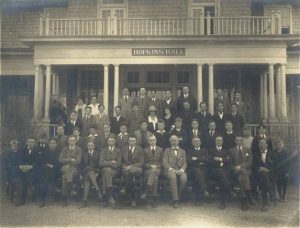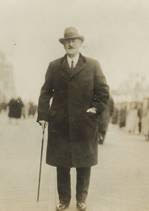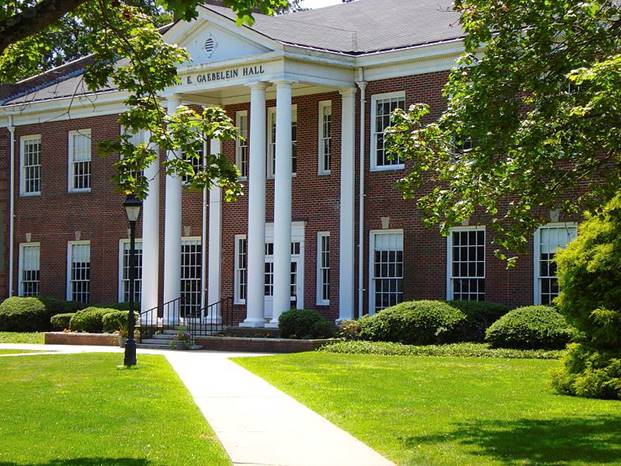The Stony Brook School marks 100th year
By D. Bruce Lockerbie
On Sept. 13, The Stony Brook School marks the 100th anniversary of inaugural ceremonies that, in 1922, made the front pages of national newspapers. Here’s the backstory.

Early in the 20th century, Presbyterian pastors decided to follow the example of Methodists, establishing summer conferences to instruct Sunday school teachers for the next year’s Bible lessons. The most prominent voice belonged to the Rev. John Fleming Carson, whose Brooklyn congregation was the second largest in the country. Carson had a summer home on Christian Avenue in Stony Brook — now the Stony Brook Community Church’s administration building — and so recommended locating the proposed Presbyterian enterprise here.
His colleagues agreed and, in 1907, acting as the Stony Brook Assembly, began buying property: What we know as the Three Village Inn, along with “riparian rights” to Sand Street Beach and a large tract of land opposite the railroad station. By 1909, the Assembly was ready for its first season, held in a tent where the North Shore Montessori School stands today, at 218 Christian Ave.
The next year a “tabernacle,” modeled after popular evangelist Billy Sunday’s contemporary venues, was constructed — then the largest meeting space on Long Island. Summer-long attendance soared into the thousands as world-renowned preachers and other public figures came to speak. Guests from across the continent swarmed to the site, building summer cottages and even impressively large homes in the surrounding area. By 1918, two hotels had been added on the grounds. The Assembly’s influx of “summer people” had replaced shipbuilding as Stony Brook’s economic cornerstone.
From its outset, however, the Assembly had also weighed founding a school to occupy its facilities year-round. World War I delayed that decision, but by 1920 the Assembly board was ready to act. Their priority was to appoint a founding headmaster to execute faithfully the Assembly’s “Platform of Principles,” a creed-like document still in effect for every member of the board, administration and faculty, affirming its theological beliefs.
Among other nominees, the board chose Frank E. Gaebelein, a 22-year-old Harvard University graduate student. At a glance, he seemed stunningly unqualified for the job. Brilliant but painfully shy and handicapped by stammering speech, he had never set foot on the campus of an independent boarding school, and had never taken a course in education or administration. His only apparent assets were as a classical pianist — taught by a pupil of German composer Johannes Brahms — and his early avocation as an Alpine mountaineer.
Nonetheless the Assembly founders saw in this young man a deep spirituality and evidences of promise to be fulfilled over the next 60 years as a pioneering Christian educator and internationally respected spokesman for such schools.

Gaebelein spent a year developing his philosophy of schooling, hiring a faculty and recruiting students from families willing to risk their sons’ education by a novice. Expecting 100 boys, he enrolled only 27, scattered in grades 4 through 12, for whom he had already hired nine teachers. They would all reside and study in Hopkins Hall, one of the summer hotels but without central heating.
On Sept. 13, 1922, the auditorium swelled with supportive constituents and the merely curious for the inaugural ceremonies. Francis L. Patton, president of both Princeton University and Princeton Theological Seminary, described “The Fourth R,” meaning religion, but the founding headmaster gave a more interesting address, stating his vision for “a grand experiment” in straightforward language.
Gaebelein’s remarks were historic and unique because his message ran counter to what leaders of every other college-preparatory school of that era would proclaim. To be sure, many of them were church-related, some with ordained clergy as headmasters, most with religious-sounding mottoes and even daily chapel services. But none would have dared to declare — as did Gaebelein on that inaugural day — that The Stony Brook School would strive to be both an academically demanding college-preparatory school and a place where its motto “Character Before Career” is set in a context of biblical teaching and example.
Over its history, the Assembly ceased its conferences in 1958, the school added female students in 1971, Frank E. Gaebelein Hall was built in 1982 and the number of day students has increased substantially. This year, some 440 students come from across the U.S. and 20 other nations.
Regarding this notable year, Joshua Crane, today’s head of school, said, “Our centennial year has been a remarkable time of reflection and celebration for The Stony Brook School as we consider the wisdom of our founders, the hard work and selfless dedication of our faculty and staff, and the students who have been the beneficiaries of an outstanding, rigorous education steeped in the Christian faith.”
The school will celebrate Founders’ Day on Friday, Sept. 16, at The Waterview at Port Jefferson Country Club.
Bruce Lockerbie served on the administration and faculty of The Stony Brook School for 34 years. He is author of 40 books, including “The Way They Should Go” (Oxford University Press, 1972), a history of the school’s first 50 years, and editor of Frank E. Gaebelein’s posthumous collection of essays, “The Christian, the Arts, and Truth” (Multnomah Press, 1984).







